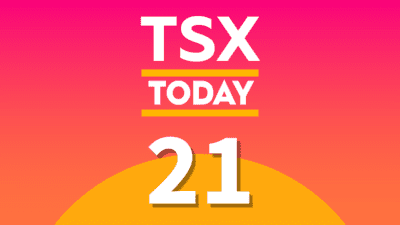Parents have a lot on their minds. I should know as one of them. Your child may get older and move from diapers to potty training, but that just leads into playground drama and eventually teenage angst. It just never ends.
But amid all this, parents simply cannot forget this one investing trick that won’t cost them a dime. Let’s get into it.
First, open an RESP
Before you even look at that trick, parents should all have a Registered Education Savings Plan (RESP). This is crucial. Not only do you have a specific account for your child’s education should they choose to attend university, but you get government money! Each and every year, you can receive 20% on top of your RESP contribution up to $500. That’s a $2,500 contribution that’s brought up to $3,000.
Of course, there are limitations. Each child has a lifetime government grant of $7,200. Plus, you can’t put in more than $50,000 total. But still, if you have more than one child, this can be unreal money to receive from the government that will be necessary come school time. That’s because the $500 applies to each child each year.
Next, grab that cash
Now, the RESP grant isn’t the only way to get free money. If you’re a parent that’s registered your child, then you likely already know all about the Child Care Benefit (CCB). Parents can therefore use these payments to put cash into their RESP to get the grant money in the first place. Therefore, it won’t cost any of your own money to max out those payments!
These payments come once a month to Canadian parents and are as much as $6,765 for a child under six and $5,708 for a child between six and 17 each year. If you’ll notice, less than half that amount would be enough to claim the full government grant for your RESP. And that’s free money you get from the government. If you think about these payments as payments towards your RESP “bill,” then you can save and invest without it hurting your own cash flow.
Finally, invest!
Unfortunately, even if you max out the RESP, it’s unlikely that $50,000 will be enough for your child’s education — especially if they do more than one degree. Instead, you need to make that work for you and invest wisely.
Wisely is the keyword. For that, I would consider the Big Six banks. In fact, why not invest in all of them? That’s what you get when you invest in BMO Equal Weight Banks Index ETF (TSX:ZEB): access to all the Canadian Big Six Banks. That also means you can get access to a 3.33% dividend yield right now that can also be invested.
The Big Six banks have long been touted as some of the best in the world during economic downturns. In fact, after the March 2020 crash each rebounded to pre-pandemic levels within a year. Yet, right now, they’re going through a drop, leaving the opportunity for quick gains in the next year.
While shares of ZEB are down 3% year to date, they’re still up 9% in the last year. That provides some solid growth for your kids down the line.
Bottom line
Don’t let free money go to waste, and certainly don’t let it just sit there. By using an RESP coupled with CCB payments, and investing in the Big Six banks, parents can make all that government money work to their child’s benefit.










